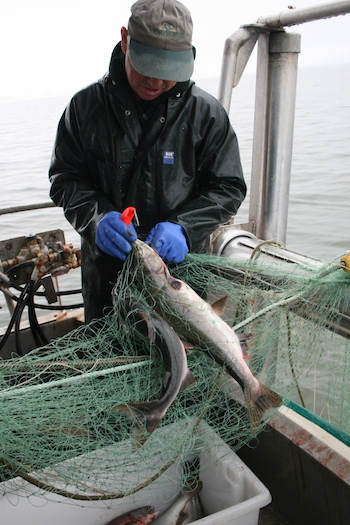Alaska salmon that got their start in hatcheries made up 25 percent of last year’s total statewide catch.
In 2019, roughly 50 million hatchery salmon were caught by Alaska fishermen, mostly pinks and chums, valued at $118 million, or 18 percent of the state’s total salmon harvest value.
That’s according to the annual salmon enhancement report by the Alaska Department of Fish and Game.
Currently there are 30 hatcheries producing salmon in Alaska, of which 26 are operated by private nonprofits. ADF&G operates two sportfish hatcheries in Anchorage and Fairbanks, the federal government runs a research hatchery near Sitka, and the Metlakatla tribe also operates a hatchery.
The hatcheries are funded by a fishermen’s tax and sales of a portion of the returning fish. They receive no state dollars. They also produce salmon for sport, subsistence and personal use fisheries at no cost to the state of Alaska.
“For the coastal communities, the hatchery program is a lifesaver for many of the people who fish for a living. It gives about 25 percent of the salmon harvest, and that supplementation is a critical component for their business model,” said Steve Reifenstuhl, who on March 15 retired after 40 years as general manager at the Northern Southeast Regional Aquaculture Association.
At Prince William Sound, which most of Alaska’s hatchery fish call home, 31 million salmon were caught last summer valued at $64 million, or 56 percent of the region’s total dockside value. Nearly 83 percent were chums, 61 percent were pinks, and 34 percent were sockeye salmon.
For Southeast Alaska, the second largest hatchery region, fishermen harvested about 6.5 million hatchery fish valued at $32 million, or 37 percent of the region’s landings value. Chum salmon contributed $24 million of that total.
Kodiak has the state’s third highest hatchery production. About 3.4 million hatchery salmon were caught there last year, nearly all pinks. The value to fishermen was close to $5 million, or 11 percent of the total dockside value for Kodiak fishermen.
Three hatcheries in Cook Inlet produce primarily sockeye and pink salmon. About 42,000 hatchery-produced salmon were harvested there last year for a total of nearly $2 million, or nine percent of the value for the region.
About 1.7 billion tiny salmon were released by Alaska hatcheries in 2019, which operators predict will produce a total return of about 52 million salmon in 2020, including 35 million pinks, 13 million chums, 2.2 million sockeyes, 1.2 million silvers and 100,000 king salmon.







